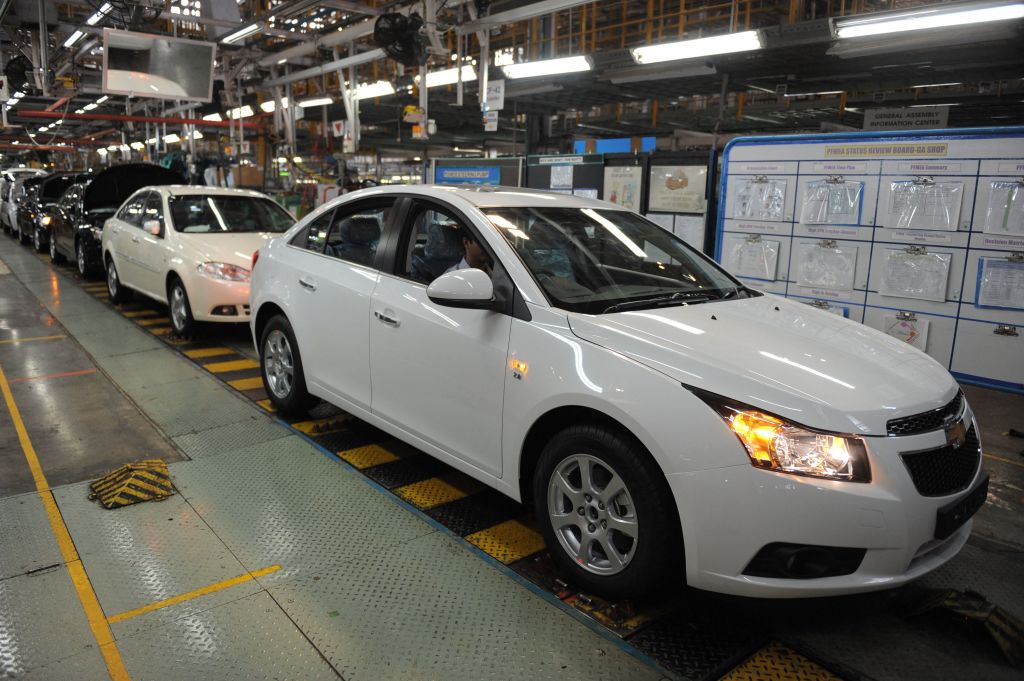- Tuesday, May 14, 2024

By: Shubham Ghosh
INDIA’S automotive industry is set to enter 2022 with a positive mindset in its quest to reach the pre-pandemic levels of sales after having built a good foundation in the outgoing year amid the challenge of semi-conductor shortage.
A number of automobile manufacturers are upbeat to embrace new technologies, especially in the electric mobility space, with demand still buoyant in the passenger vehicle segment despite the rise in commodity prices.
ALSO READ: Indian automaker Mahindra predicts chip crisis easing
The electric mobility space is set to witness a number of launches in the new year, both in the four and two-wheeler categories.
India approves semiconductor chip-making scheme
While many of the manufacturers are still worried over the Omicron variant of the virus, they are also convinced that the experience gathered from the past two years will help in business operations, even if there is a third wave, thanks to a large-scale digitisation.
In an interview with Press Trust of India, Maruti Suzuki India chairman RC Bhargava said that the industry would do better in 2022 as compared to 2021.
“This year, we had a lot of production loss due to shortage of semiconductors. I think the situation will be much better in 2022,” he said, adding the economy is going to grow faster, which is a positive factor.
“So all these put together, except for the uncertainty related to the Omicron variant, I think it indicates that 2022 would be a much better year,” he added.
While acknowledging that 2021 has turned out to be a very challenging year for the industry, SIAM (Society of Indian Automobile Manufacturers) director general Rajesh Menon also expressed hope for a better situation in the new year.
“The auto industry is hopeful that the new variant of Omicron of Covid would not play a major spoilsport and the society and economy would be able to sustain with reasonable health and safety precautions. We are hopeful that once the semiconductor crisis eases out, the industry can expect to do better in 2022,” he said.
Government policies such as the extension of FAME-II scheme till 2024, enhancement of incentives for two-wheelers and launch of the production-linked incentive (PLI) scheme for auto and auto component sector for about Rs 26,000 crore (£2.5 billion) and PLI for advanced chemistry cell for about Rs 18,000 crore (£1.7 billion) will provide enormous support to the sector as it adopts advanced technologies, Menon added.
While the recently announced incentive scheme of Rs 76,000 crore (£7.5 billion) for semiconductor manufacturing over six years is encouraging, the top SIAM official said the announcements for setting up scrappage centres, inspection and certification facilities would result in scrapping of vehicles which are not road worthy, thereby creating demand.
Tata Motors president, passenger vehicle business unit, Shailesh Chandra said, “Looking ahead, we expect the demand for passenger ICE and electric vehicles to remain strong even as concerns about the supply of semiconductors and high input costs continue alongside the uncertainties connected with the Omicron variant.”
Mahindra & Mahindra executive director (auto and farm sectors) Rajesh Jejurikar noted that overall, the industry has been through a tremendous learning curve, whether it is managing resources, supply chains, adopting technology and digitisation to improve customer experiences and innovating quickly to respond to changing dynamics.
“I feel these learnings will stand us in good stead as we move forward,” he said.
However, Honda Cars India president and chief executive officer (CEO) Gaku Nakanishi said the outlook for 2022 remains “cautiously optimistic owing to concerns about constant rise in the cost of raw material as well as supply-side constraints”.
A Hyundai spokesperson said, “At present, the automobile sector is witnessing multiple changes with the government driving a variety of initiatives in parallel to boost the auto sector through product-linked, scrappage policy, etc.
“We are cautiously optimistic as the government has undertaken a gamut of initiatives to promote investments and growth in the entire manufacturing value-chain in India,” the spokesperson said.
Mercedes-Benz India managing director and CEO Martin Schwenk said, “The demand outlook is positive. We have created a good foundation this year… We can come back to what we had in the total market prior to the pandemic crisis… I would definitely see for the luxury segment that we will be able to go back to the growth rates we had until say 2018 on an annualised basis.”
Audi India head Balbir Singh Dhillon said the segment is showing encouraging signs and the pace is expected to pick-up in the coming months. Yet, he said, “The luxury car industry will take on an average two more years for sales to reach pre-pandemic levels of 35,000-40,000 units a year. The industry needs a stable policy for the segment to grow. Taxation and duty structures make it difficult for the segment to expand.”
Industry body ACMA (Automotive Component Manufacturers Association) president Sunjay Kapur said in 2022, all segments of the vehicle industry, especially the two-wheeler sector, are likely to demonstrate robust performance.
“That apart, strong global demand for India made components and the thrust on EVs have given rise to several opportunities that the component manufacturers can harness,” he said.
(With PTI inputs)
![]()